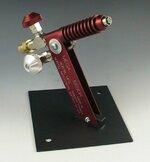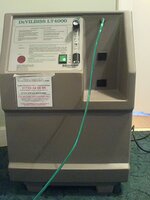Bonaro
Hero Member
- Aug 9, 2004
- 977
- 2,213
- Detector(s) used
- Minelab Xterra 70, Minelab SD 2200d, 2.5", 3", 4"and several Keene 5" production dredges, Knelson Centrifuge, Gold screw automatic panner
- Primary Interest:
- Prospecting
I am on the injured reserve list so I am catching up on all the little projects I have wanted to do but haven't had the time.
I saw a video about a soup can blast furnace on you tube so I decided to make a small assay furnace.
The pics are pretty self explanatory if you look at them. It aint pretty bit it works and I only have about 2 hours invested in it and had all the materials laying about.
Furnace sldeshow
I saw a video about a soup can blast furnace on you tube so I decided to make a small assay furnace.
The pics are pretty self explanatory if you look at them. It aint pretty bit it works and I only have about 2 hours invested in it and had all the materials laying about.
Furnace sldeshow
Amazon Forum Fav 👍
Upvote
0





